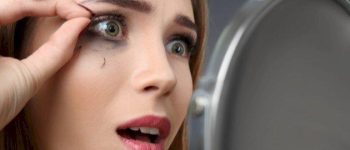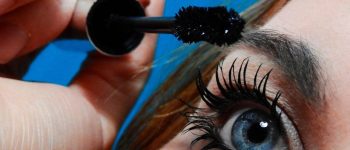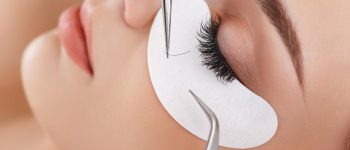No one is a stranger to hair shedding—it’s something we all experience on some level. With the exception of balding or medical conditions, though, hair that is cut or shed typically grows back over time. But do eyelashes grow back? Read on to learn more about eyelash loss, its causes, and what you can do about it.
The Answer: Yes, Eyelashes Do Grow Back
Just like the hair on top of your head, it is natural for eyelash hairs to grow, fall out, and regrow—this process takes about 4-16 weeks[^1^]. However, there are some caveats and exceptions. Namely, as long as there is no trauma or lasting damage to the eyelid itself or the hair follicles, your lashes should grow back. In some cases, especially during chemotherapy or due to medical conditions, the lashes that grow back may be different from what they used to be—thinner or shorter[^2^].
Causes of Eyelash Loss
Everyone has to deal with hair loss in some form—all of us usually lose up to 100 strands a day[^3^]. Eyelashes fall out too, due to medical conditions and other factors, including:
- Burns—Heated eyelash curlers or flames can singe your lashes.
- Pulling—Some people have a psychological condition known as trichotillomania, which is characterized by the impulse to pull out hair anywhere on the body—this often includes the lashes.
- Lash extensions—Extensions can rip out or damage the natural hair underneath, and some people may have an allergic reaction to the glue used to keep them in place.
- Cosmetics—Leaving mascara or eye makeup on for too long, or reactions to eye cosmetics, can lead to temporary lash loss.
- Eyelid disorders—Conditions like blepharitis, dermatitis, and eyelid infections can affect the eyelash follicle and lead to lash loss.
- Thyroid conditions—Abnormalities with your thyroid can lead to hair loss, both on your head and your face.
- Alopecia areata—This autoimmune condition causes your body’s immune system to attack your hair follicles, leading to hair loss on the scalp, brows, and lashes.
- Chemotherapy—Some medications used to treat cancer cause temporary hair loss on the scalp, face, and body.
Eyelash Growth Cycle
The good news is that most of the time, eyelashes do grow back. Unfortunately, the regrowth process can take up to 16 weeks. Just like the hair on your scalp, eyelashes grow in a three-phase cycle[^4^]:
- Anagen phase—This is the growth phase when new hairs grow from eyelid follicles. Anagen usually lasts for 1-3 months and is what determines your eyelash length.
- Catagen phase—During this degradation phase, growth stops, and the follicles begin to shrink.
- Telogen phase—This is the resting phase that occurs once the follicle has matured. Eyelashes hang out in this phase until they fall out.
Depending on what caused you to lose your lashes, your regrowth time may vary.
Tips for Growing Eyelashes Back
Losing your lashes can be distressing, but there are treatment options available. If an eyelid condition is causing your eyelash loss, seek medical advice from an eye care professional. Once you treat your eyelid condition, your eyelashes will typically grow back. Similarly, treating medical conditions or stopping chemotherapy medications (when recommended by your healthcare provider) will allow eyelash regrowth.
Latisse is an FDA-approved medication that may actively help your lashes grow back. It contains the active ingredient bimatoprost, which works by increasing the number of hairs in the growth phase and the amount of time hairs spend in anagen—this leads to hair growth, along with longer, fuller, and darker lashes[^5^]. Latisse is a topical solution that requires a doctor’s prescription.
Be careful with over-the-counter eyelash growth serums, as the FDA does not regulate these products. Some may cause allergic reactions or side effects. Talk to your eye care professional to see if these products are appropriate for you.
How to Prevent Eyelash Loss
The best treatment is prevention. Here are some simple approaches to prevent eyelash loss and keep your lashes healthy:
- Be careful removing eyelash extensions—If you use eyelash extensions, make sure to remove them gently. Before you get extensions, look at the ingredients in the glue to see if you are allergic to any of them. Check the reputation of the salon you are using, especially with regards to hygiene.
- Remove eye makeup nightly—Gently remove eye makeup each evening using a mild cleanser. Avoid rubbing your eyelashes too much to prevent them from breaking or falling out.
- Stop using eyelash curlers—These instruments can make eyelashes fall out or break.
- Diet—Eating a healthy diet, with protein, fruits, and vegetables, along with drinking lots of water, can help hair all over your body stay healthy. Some people recommend vitamins to prevent hair loss, but the scientific data does not sufficiently support these claims.
- Avoid eyelash conditioners—You have eyelid glands that naturally lubricate the eyelashes, so there is no need to apply lotions or moisturizers, which can irritate your skin.
Eyelashes are more than just decorative—they protect your eyes. It is important to take care of your lashes. If you have any concerns about eyelash loss, see an eye care professional who can help guide you through the treatment options.




